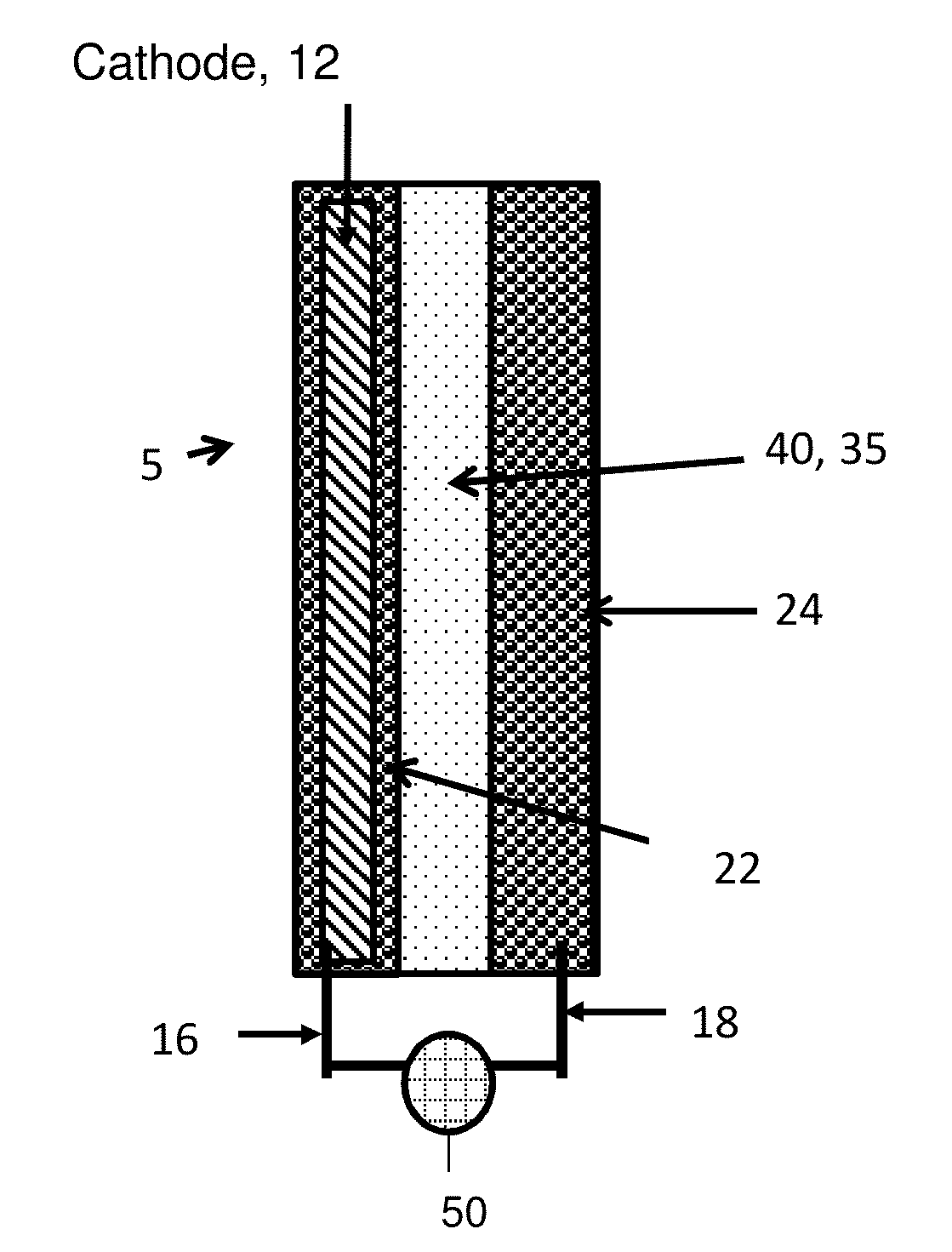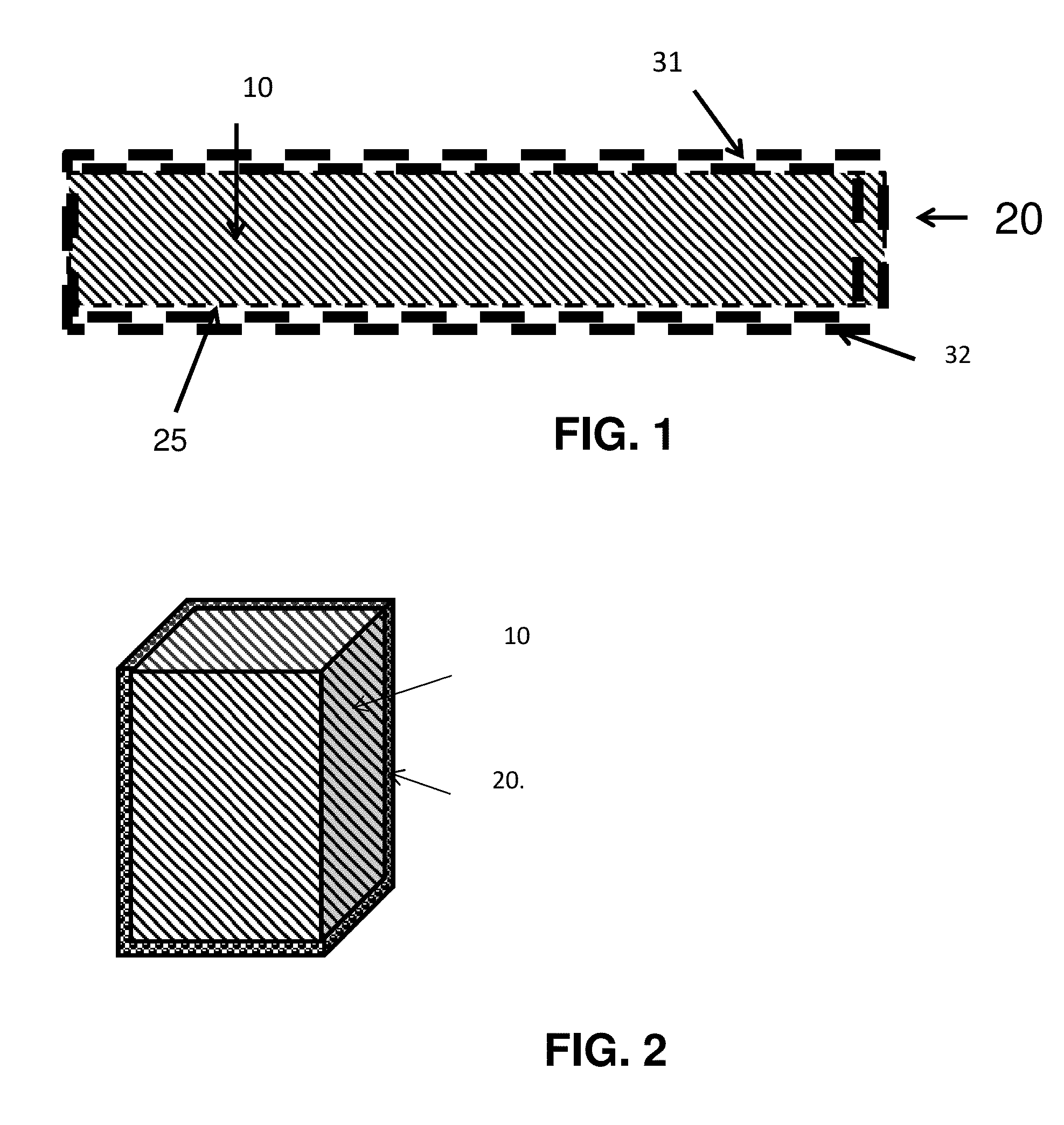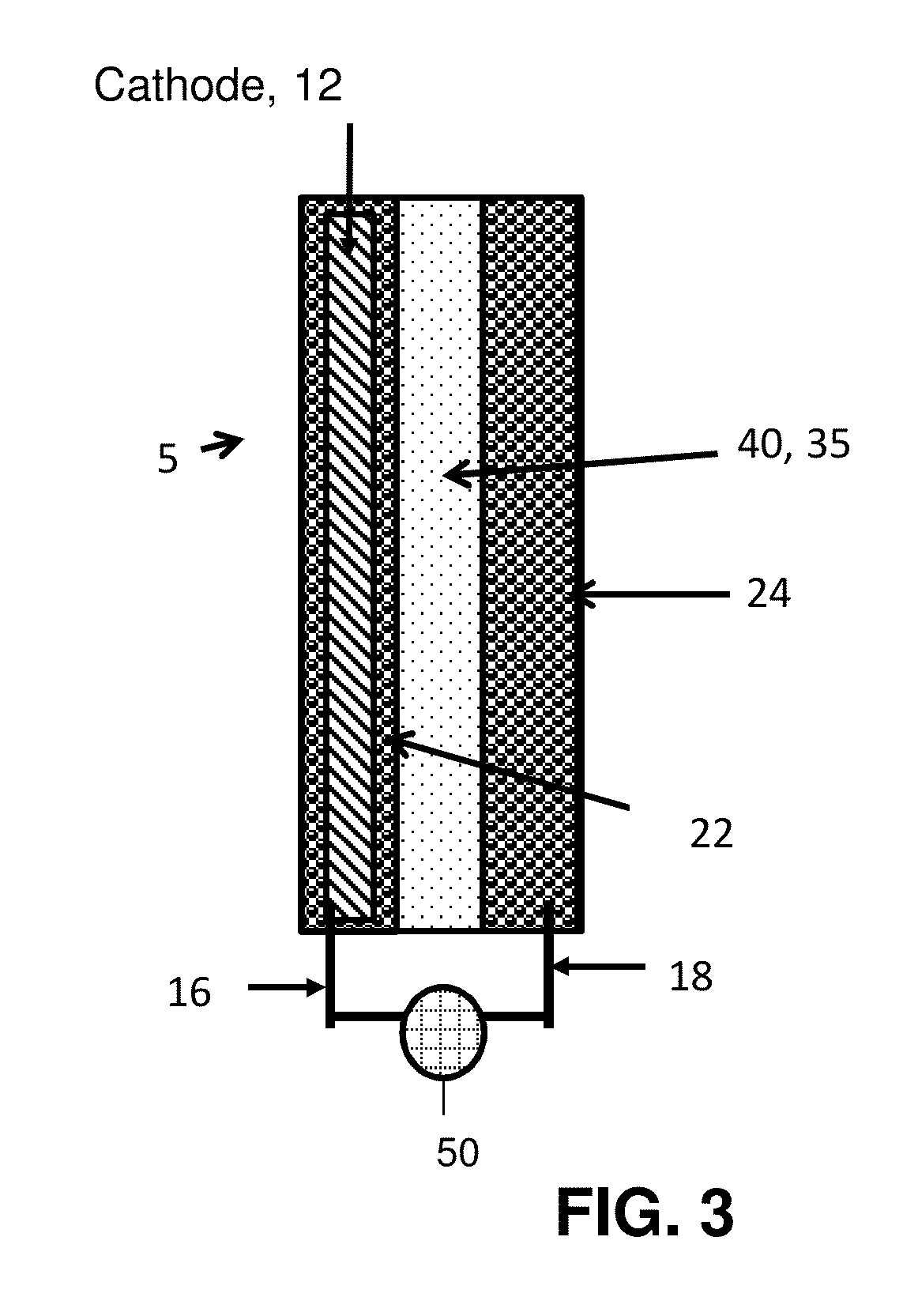Separator enclosures for electrodes and electrochemical cells
a technology of electrochemical cells and separater enclosures, which is applied in the field of electrochemical storage and conversion devices, can solve the problems of dendrite formation and practicability, and achieve the effect of improving the cell performan
- Summary
- Abstract
- Description
- Claims
- Application Information
AI Technical Summary
Benefits of technology
Problems solved by technology
Method used
Image
Examples
example 1
Electrode Confinement in a Separator Cloth
[0103]A novel separator for electrochemical cells is introduced. An example is such that the separator covers at least the entire surface of an electrode facing the opposite electrode. In some embodiments the separator can have a closed geometry such that it can cover all the surfaces of an electrode. In some embodiments the separators can apply pressure on at least one surface of an electrode. The applied pressure can improve the performance of the cell such as cycle life, e.g., by maintaining sufficient contact between the cell components. For example, the applied pressure is very helpful in cycling metal based electrodes such as lithium metal, zinc metal, ZnO or silicon anode. The applied pressure is also helpful to prevent material loss of the electrode, for example the applied pressure can help with the uniformity of the electrode, such as providing an electrode having a substantially uniform thickness (e.g., deviations from an average ...
example 2
Separators for Electrodes and Electrochemical Cells
[0118]A novel separator for electrochemical cells is introduced such that the separator covers the entire surface of an electrode facing the opposite electrode In some embodiments the separators cab apply pressure on at least one electrode. The applied pressure can improve the performance of the cell such as cycle life. For example, the applied pressure is very helpful in cycling metal based electrodes such as lithium metal and zinc metal. The applied pressure is also helpful to prevent material loss of the electrode, for example the applied pressure can help with the uniformity of the electrode. One example can be in batteries such as lead acid batteries or lithium batteries or alkaline batteries (e.g. Zinc batteries) that the applied pressure can hinder the shape change of the electrode and thus improves the performance and cycle life. The applied pressure by the separator can result in uniform and smooth electrode surfaces during...
PUM
| Property | Measurement | Unit |
|---|---|---|
| porosity | aaaaa | aaaaa |
| porosity | aaaaa | aaaaa |
| contact pressure | aaaaa | aaaaa |
Abstract
Description
Claims
Application Information
 Login to View More
Login to View More - R&D
- Intellectual Property
- Life Sciences
- Materials
- Tech Scout
- Unparalleled Data Quality
- Higher Quality Content
- 60% Fewer Hallucinations
Browse by: Latest US Patents, China's latest patents, Technical Efficacy Thesaurus, Application Domain, Technology Topic, Popular Technical Reports.
© 2025 PatSnap. All rights reserved.Legal|Privacy policy|Modern Slavery Act Transparency Statement|Sitemap|About US| Contact US: help@patsnap.com



